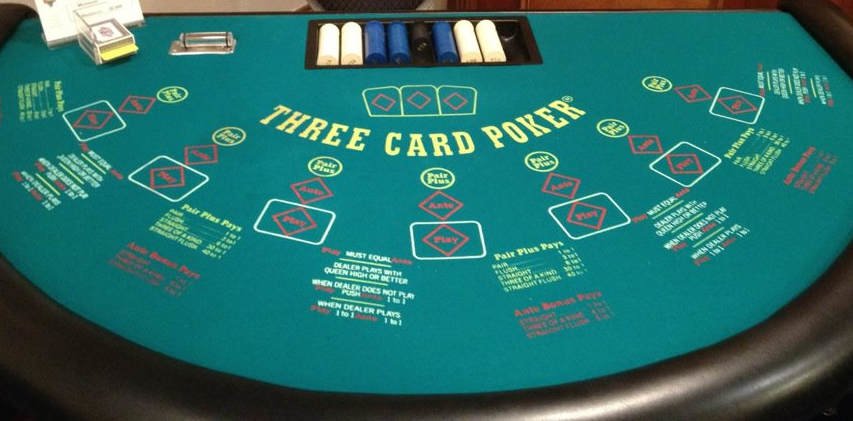
Multi-table poker tournaments (also known as MTT's for short) of all field sizes and buy-in levels can be found online 24 hours a day.
Tournament poker edge gives you the poker training you need to succeed with videos, lessons, tips and strategy. Learn in-depth Multi-Table Tournament (MTT) strategy through the industry leader, Tournament Poker Edge. Become a tournament poker pro and start winning. Sign up for a free trial today. Multi-Table Tournament Poker Strategy Early, Middle, and Late MTT Strategy. Multi table tournaments are different from single tables in many different ways. There is a larger field to fight. Jonathan Little is well-known for providing tons of free quality poker strategy tips. Multi-Table Tournament Tips for Online Poker MTT Tips. Multi table poker tournaments are extremely popular in online poker, and it is worth knowing how to play them well before you enter one. There are many differences a player needs to make when sitting down at a multi table tournament table, and here are some MTT tips to remember.
This article will cover basic multi-table tournament strategy at the various stages that a tournament will go through before the lucrative final table.
MTT prize pool structure.
We will start by looking at the key factor of how the prize pool in a multi-table online poker tournament is distributed – and the big influence this needs to have on your strategy in order to maximize your poker winnings over time. Next we go through the early, middle (including the bubble) and later stages of a poker tournament showing what factors influence your strategy at each point.
Tournament prize distribution is very ‘top heavy’. The players who reach the final table will split up to half of the total prizes between them – while those who make it into the first paying spots only will often win less than twice their initial buy-in. Even at the final table the top 3 paying places will give a disproportionately larger payout than the other places.
This has a large effect on tournament strategy for those players who are looking to maximize their long-term profits. Aggressive, positive play is rewarded at all stages of the tournament - by a shot at reaching the final table. Passive play during the later stages may enable you to sneak into the money positions – however this will not make up for just a few final table appearances when adding up profits at the end of the month or year.
Early stage tournament strategy.
In the very early stages of a poker tournament the game plays in a similar way to a cash game table. This is because the stack sizes are many times the size of the blinds, allowing betting on the flop, turn and river for many hands. ‘Deep Stacked’ play involves its own adjustments including favoring hands which can make hidden ‘monsters’ such as small pairs and suited connectors. Hands that are easily dominated such as Ace-Ten and King-Jack should generally be avoided at this stage.
Your strategy objective in the first few blind levels should be to accumulate chips from the weaker opponents who will still be in the tournament at this stage. At the same time you should avoid big ‘gambles’ for all of your chips if you feel that your skill advantage will have time to show over a larger number of small pots.
One saying for the early stages of multi-table tournaments is that ‘you need to take the chips from the weak players before someone else does’ – after all they will be harder to take from a stronger opponent later down the line.
Transitioning from early to late stages.
As the blinds and antes get higher when compared to the average stacks your tournament strategy needs to adjust to new conditions. Since you must invest more chips to see a flop the value of the speculative hands played in the early stages goes down.
High cards however go up in value when you are the first to enter the pot. Since calling a raise in the middle stages requires investing a large proportion of your stack this should be avoided where possible. Your opponents are often in the same situation – meaning that you’re raising requirements can be ‘lighter’ than before, especially from late position.
Playing on the bubble.
The bubble is the stage of the tournament where just a few players need to be eliminated in order to reach the money paying places. At this stage the single most important factor affecting your strategy are stack sizes – both your own and those of your opponents.
Having a large stack at the bubble will allow you to pick up many pots uncontested – as players will be less likely to fight with a big stack when they risk busting out before the money. Other big stacks and very short stacks should be avoided here, as they are more likely to call you.
If you have a medium stack at the bubble then you can use the knowledge that bigger stacks are likely to steal pots to your advantage. If you are dealt a reasonably strong hand and expect the big stack to be ‘raising light’ you can have a positive expectation situation for a re-raise. Sure you will get unlucky and bust out sometimes – but your strategy for the whole tournament is to reach the final table and doubling up could give you a chance to do so, more than making up for losing the small ‘in the money’ payout.
After the bubble ‘bursts’ players will often loosen up considerably in an effort to accumulate enough chips to reach the final table. At this stage you need to choose your spots carefully. As with all forms of poker it is better to be the raiser rather than the caller.
MTT final table strategy.
Online Poker Mtt Tips Game
The final table brings in yet another factor into your poker strategy thinking. Stack sizes are still very important, but now the payout structure – and your opponent’s strategy in relation to this come to the fore.
The presence of a very small stack is a good example of how this affects the dynamic of the final table. Medium stacks will see that one player is just 1 big blind away from busting and will tighten up to avoid going out before this player. This can lead to some great opportunities to pick up chips without too much risk.
Mtt Poker Trainer
Aggressive and positive poker are again the key elements to success at this stage of the poker tournament. The top three places will pay proportionately more than the rest – aim high by picking fights with those opponents who look like they would like to move up in the money. Big stacks and small stacks should again be avoided, the medium stacks are much more likely to fold to pressure at this stage.
MTT strategy evaluation.
In summary, tournament strategy involves adjusting to the various stages which a poker tournament will go through. At the same time your goal in every tournament should be to reach the final table. Busting on the bubble never feels good – however if for each time you bubble you reach another final table then your long-term profits will be better than that of opponents who tighten up in order to make the money.
Go back to the awesome Texas Hold'em Strategy.
Comments
Multi-table tournaments are an increasingly popular way of making money in online poker. Unfortunately, many successful cash game players fail to do well in these events because they don’t understand MTT Strategy. Tournaments require a different style of play to other poker games. The following article will go over some basic principles for how to play online tournaments.
Early Stage MTT Strategy Tips
When you’re sat at a nine or ten man table at the beginning of a tournament, concentrate on playing only top hands. These include AK AQ, high suited connectors, and pocket pairs. The biggest mistake new tournament players make is calling in early position with rag ace hands such as A7 or A3. The problem here is that with the number of players at the table, you’re almost statistically certain to be up against someone with an Ace higher kicker. You’ll lose your stack early playing rag ace hands or anything else below the range I suggested.
Another thing to remember in the early stage of poker tournaments is not to worry about stealing the blinds. At the early stage of poker tournaments, the blinds aren’t large enough to provide value for bluffing or stealing. Wait till the later stages of the tournament before you become preoccupied with this.
Middle Stage MTT Strategy Tips
This is where you need to earn most your chips. The middle stage of a poker tournament is generally where all the action and best play happens. It’s also where the lucky players to reach this stage will lost their stacks.
Remember that playing optimally in tournaments isn’t necessarily the correct strategy. Instead, you should focus on playing as aggressively as you can, stealing as many blinds as you can; and continuation betting as many times as you can get away with. Don’t be afraid to value shove either. Slow playing hands like KK can be costly in a tournament.
Many professionals recommend value shoving with premium hands in early position because of the value you receive from getting called. Another advantage to value shoving with premium hands is that it looks like a bluff – so players will be more likely to call you. The squeeze play is also crucial at this stage. With respect to hands you should be playing, it’s much more dependent upon your position. In a late position you can call, raise, or even go all-in with a range of hands including AJ, 10J suited or pocket twos.
Poker Mtt Opening Ranges

Also be prepared to defend your blinds. At this stage in a tournament, the blinds can represent anything from 5-20% of your total chip stack; so watch out for players in late positions stealing them. If you notice patterns from poker players doing this, make sure you hit back at them.
Mtt Poker Strategy
Final Stage MTT Strategy Tips
The aggressive action and squeeze plays from the middle stages tends to attenuate by the later stages of a poker tournament. When you’re approaching the bubble, a large number of small and medium stack players will be hanging on for dear life trying to make the money. Try to take advantage of these players by raising them all-in when they’re on the blinds. They’ll often only call with premium hands, which make them a perfect target to prey on.
A common trend at the final table is that there is very limited action on the flop. Most the action occurs preflop. Also, when you find yourself on the final tables, very often you’ll find yourself shorthanded. Taking this into account you should allow yourself to play and raise preflop with a much higher range of hands including A-7 or even A-3 suited.
